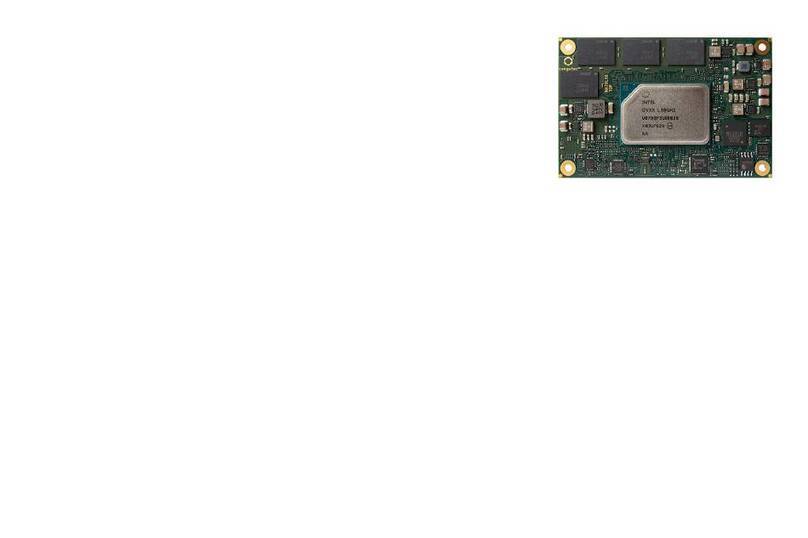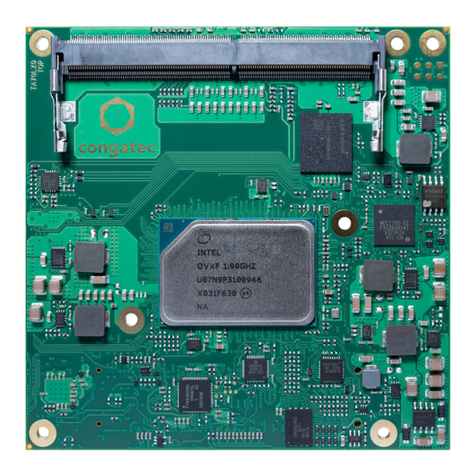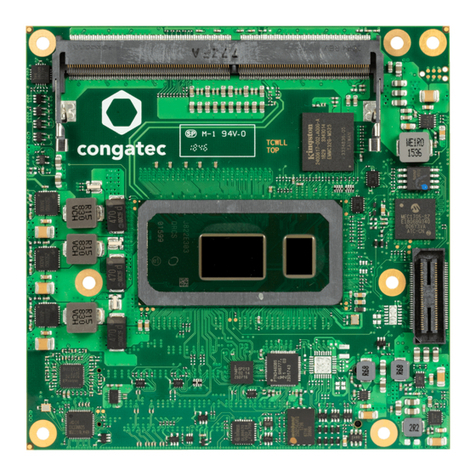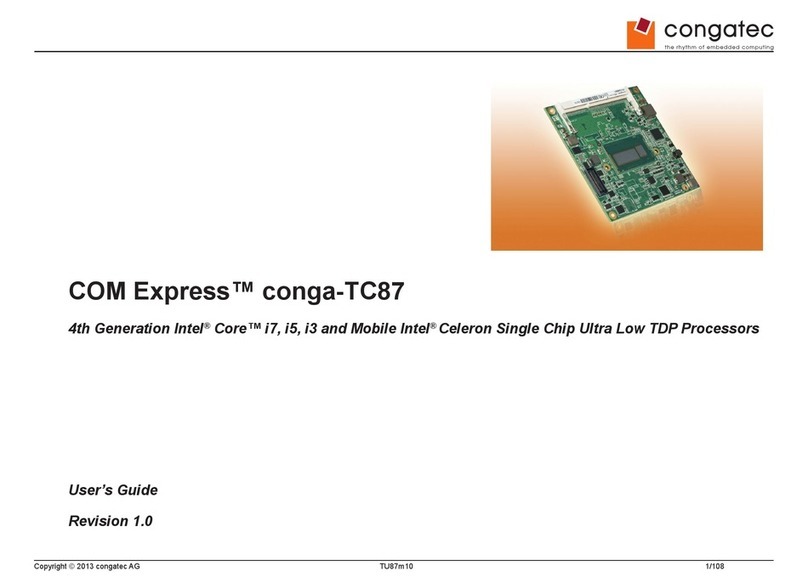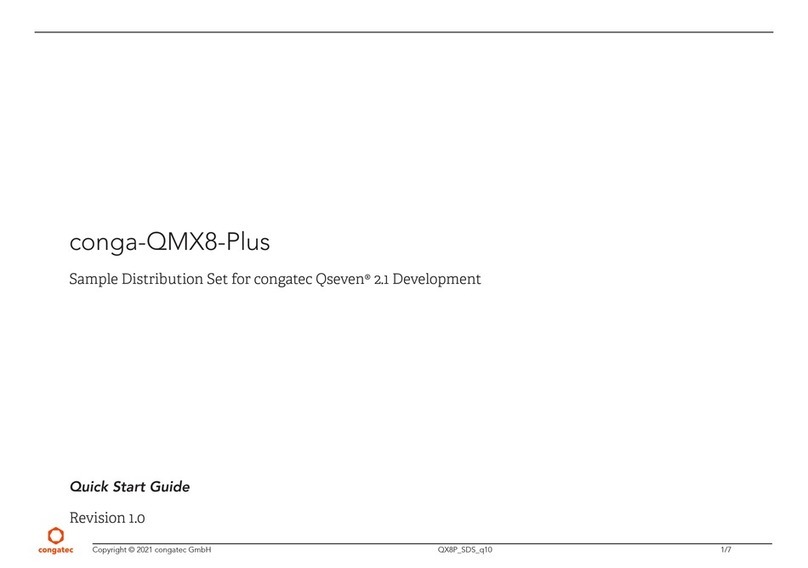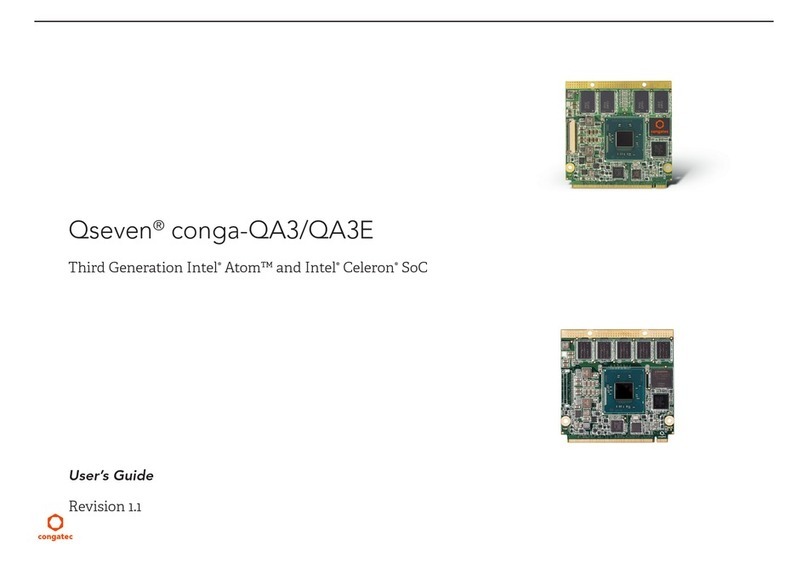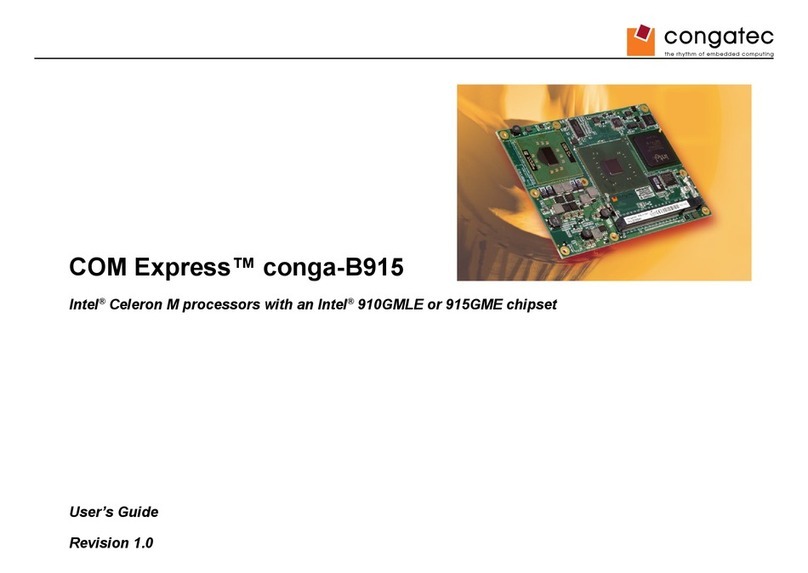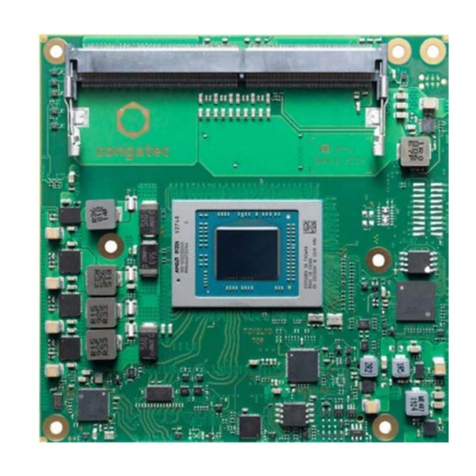
Copyright © 2014 congatec AG QEV2m11 7/49
Contents
1 Introduction ................................................................................8
1.1 Qseven®2.0 Concept.................................................................8
1.2 QEVAL 2.0 .................................................................................8
2 Jumper and DIP Switch Settings ...............................................9
3 Connector Layout.....................................................................10
4 Specications...........................................................................12
4.1 Mechanical Dimensions ...........................................................12
4.2 Power Supply...........................................................................12
4.2.1 PWR_OK Signal ......................................................................14
4.2.2 Power Status LEDs D20-D25 ..................................................14
4.2.3 Power-up Control .....................................................................14
4.3 CMOS Battery..........................................................................15
4.4 Environmental Specications...................................................16
5 Connector Description .............................................................17
5.2.1 SMBus .....................................................................................21
5.2.2 I²C Bus ....................................................................................21
5.2.3 SPI Bus ....................................................................................22
5.2.4 HDA Audio................................................................................23
5.2.5 LPC Super I/O Device..............................................................25
5.2.5.1 COM Ports ...............................................................................25
5.2.5.2 KBC Interface...........................................................................26
5.2.6 LPC/GPIO Header ...................................................................26
5.2.7 Universal Serial Bus (USB)......................................................27
5.2.8 Ethernet 10/100/1000 ..............................................................30
5.2.9 Serial ATA™.............................................................................31
5.2.10 Serial ATA™ Auxiliary Power ...................................................31
5.2.11 LVDS Flat Panel Interface........................................................32
5.2.11.1 Flat Panel and Backlight Power Supply ...................................34
5.2.11.2 Flat Panel and Backlight Power Supply Connection................35
5.2.11.3 Flat Panel Conguration Data..................................................36
5.2.12 PCI Express Routing................................................................36
5.2.13 PCI Express Mini Card.............................................................38
5.2.14 Digital Display Interface (DDI)..................................................39
5.2.15 SDIO Interface .........................................................................40
5.2.15.1 SD/MMC Card Socket..............................................................40
5.2.16 CAN Bus ..................................................................................40
6 Additional Features ..................................................................42
6.1 Power Button ...........................................................................42
6.2 Sleep Button ............................................................................42
6.3 Reset Button ............................................................................42
6.4 LID Button ................................................................................42
6.5 Switch SW3..............................................................................43
6.6 PC Speaker..............................................................................43
6.7 Debug Display..........................................................................43
6.8 Onboard Module’s COM Port...................................................44
6.9 Internal Use Only Connectors..................................................45
6.10 Ground Probes.........................................................................45
6.11 External System Wake Event...................................................45
6.12 Fan Connector and Power Conguration.................................46
6.13 Feature Connector ...................................................................47
7 QEVAL 2.0 Mechanical Drawing..............................................48
8 Industry Specications .............................................................49
